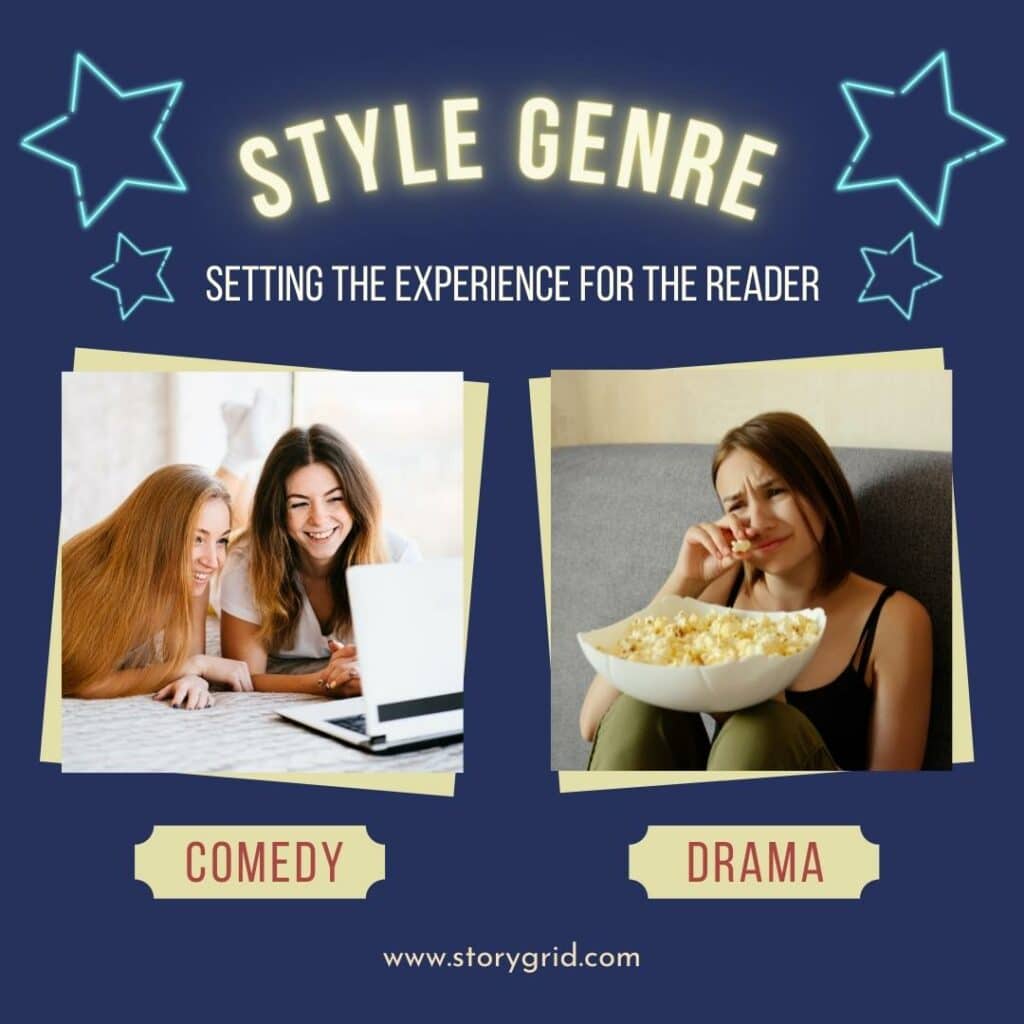What is the Style Genre?
The Style Genre sets the tone for what the audience will experience during the story. It puts constraints on what we include in the story to keep a consistent feel so the audience does not get confused.
The Style Genre is one of the five components of the GENRE FIVE LEAF CLOVER and it’s helpful to remember that GENRE is a label that tells the reader what to expect. The Style Genre covers how emotions are handled, what form the story takes, and what kind of language is used throughout the story.

2 Broad Categories of the Style Genre
All stories fall into one of two Broad Style Categories. This is about how the audience experiences truth, pain, and emotion in the story.
- Drama – Stories in this category express a tone of solemnity. The AVATARS face reality as it is and experience pain the way we do. Emotions are truthful and fulfilling.
- Comedy – Stories in this category are funny. Avatars make jokes at the worst possible time in order to avoid truthful emotion and physical pain.
8 Mediums of the Style Genre
After we choose the Style category, we choose a medium, such as those listed below, through which we deliver a consistent experience for the audience.
- Documentary – These stories employ a fact-based tone like the film The Battle of Algiers or “mockumentary” styles like This is Spinal Tap.
- Musical – In these stories, AVATARs break into song, like in Hamilton or Hair Spray.
- Dance – This medium includes performances like Swan Lake or martial arts films like Crouching Tiger, Hidden Dragon.
- Literary – Literary stories have a sensibility of “high art” as pronounced by a particular intelligentsia.
- Poetry – These stories are told by an AUTHOR through metrical verse like The Odyssey by Homer or Pale Fire by Vladimir Nabokov.
- Minimalism – These stories include short fiction from writers like Raymond Carver in the collection Will You Please Be Quiet, Please?
- Meta – These stories are self-referential works that present stories about stories, like The Crying of Lot 49 by Thomas Pynchon or Infinite Jest by David Foster Wallace.
- Post Modern – These stories are fragmented and subversive of formal Story Structure, like Naked Lunch by William Burroughs.
- Theatrical – These stories have the qualities of the theater, like Our Town by Thornton Wilder or A Midsummer Night’s Dream.
- Cinematic – These stories have the qualities of film, like The Matrix or A Fish Called Wanda.
- Epistolary – These stories have the qualities of letters or other written communication like Frankenstein by Mary Shelley or The Guernsey Literary and Potato Peel Pie Society by Mary Ann Shaffer and Annie Barrows.
- Animation – These are stories consisting of a series of images that simulate movement. They range from dramatic tales like The Iron Giant to anthropomorphized or fantastical silliness, like Looney Tunes or The Incredibles.
Additional Resources